Game theory is the study of how interacting choices of economic agents produce outcomes with respect to the preferences of those agents.
Behavioural Game Theory approach to inclusive growth
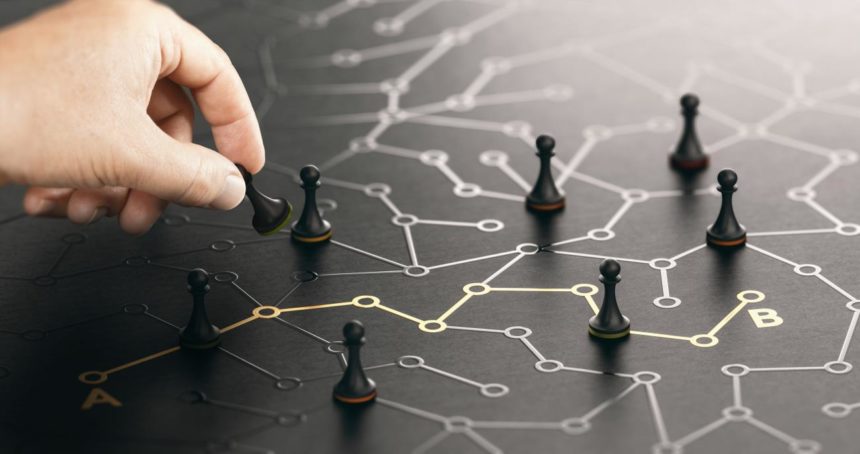
Inequal and Inefficient distribution
Today we produce food to feed 10 billion people for 7.6 billion people living on our planet; still, 800 million people go to sleep hungry. Therefore, even when food production is more than enough, there is a widespread inefficient distribution. This problem is not just limited to food distribution. According to Kramer and Brewer, “Dwindling fossil fuel deposits, electrical brownouts, depleted freshwater reserves, and the unavailability of clean, breathable air is all symptomatic of less than optimal use of scarce public resources.” What are the roots of this inadequate distribution? Is there a way to overcome this challenge? This article will formally articulate the problem and discuss fundamental methods to solve this puzzle using game theory, behavioural economics and social psychology concepts.
Modelling the problem as Game
The problem can be articulated using game theory. Game theory is the study of how interacting choices of economic agents produce outcomes with respect to the preferences of those agents. In reality, every decision we make is a part of a problem that can be formulated as a game. For example, consider a couple. A couple, for the sake of simplicity, let us say, needs to manage time between nurturing the children and working outside. For each combination of choice for both the husband and wife, there is a corresponding individual satisfaction. This situation is an interaction of two economic agents, husband and wife, who, based on their preferences, produce outcomes in terms of management efficiency that eventually leads to satisfaction.

All problems are not easy to solve since the game might involve the interaction of two economic agents who have conflicting preferences. This interaction might also lead to bizarre outcomes where both individual agents consciously choose a sub-optimal outcome. One famous problem is the tragedy of the commons. The tragedy of the commons is a situation where all economic agents having free access to shared public resources exploit it without consideration of the common good, causing overwhelming depletion of the resource. Some of the examples are overfishing, overgrazing of cattle and destruction of the rainforest.
The Paradox of Prisoner’s Dilemma
The tragedy of the commons is an example of a larger umbrella of paradox called the Prisoner’s dilemma. In Prisoner’s dilemma, A and B have been arrested for robbing a bank and placed in separate isolation cells. The prosecutor gives them two options either to confess other’s crimes or to remain silent. If one confesses about another’s crime while the other remains silent, the silent accuser faces 3 years jail sentence, and the confessor goes free. If both of them confess about each other’s crime, both of them face 2 years sentence. However, if both remain silent, they will each face just 1-year sentence. However, the catch is that they cannot communicate with each other and have to make their decision individually.
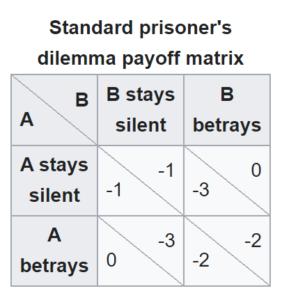
The dilemma here is no matter what the other does, it is individually better for any accused prisoner to confess about the other’s crime. However, by doing so, both have to face 2 years in prison which is worse than spending 1 year in prison by collectively remaining silent. Although in the case of criminals, society would not want them to cooperate and free themselves from the punishment of their crimes, we would like to find ways for other Prisoner’s dilemma type situations where people opt for a sub-optimal outcome for the society. There is another Prisoner Dilemma type example described on the Stanford Philosophy page. Ley us say Bill has a blue cap and would prefer a red one, while Rose has a red cap and would prefer a blue one. Both prefer two caps to anyone and either of the caps to no cap at all. They are each given a choice between keeping the cap they have or giving it to the other. Exchange of caps here will be mutually beneficial. However, that would not occur because there is a risk of losing the one cap they already have. In such cases, society would want to understand the mechanism of promoting cooperation amongst the agents.
One solution is to enforce a contract between the agents and punish those who don’t follow it. A contract is an agreement between organizations directed toward an economic end. In such agreements, if someone does not play according to contract, if they betray or defect, then a punishment greater than the benefit they received is incurred. If two players indulge in a contract, it is because they want to increase their utility from x to y (y>x) without being at the risk of earning even lesser (<x). Therefore, when two self-interested players make a contract, they are concerned about their own benefit, but a cooperative outcome is reached as a side effect.
However, making a contract is not possible for most of the Prisoner’s dilemma situations we are facing as a society. When both the players are self-interested, they would want to make a contract to reap higher self-interested benefits collectively. Thus, laws and regulations prohibit them from doing so. We can understand this by adding a third player in the Prisoner’s dilemma type situation called the ‘rest of society’ and counting the total utility, including all three players. To give an example, making contracts in an oligopolistic market is prohibited in most places.
Another solution is playing repeated games. Repeated games mean that the same Prisoner’s dilemma game is being played again at different time stamps. Most of the games we play are finite games. In finitely repeated games, incentivizing cooperative equilibrium is difficult because of the unravelling problem. As each player knows that it is beneficial to defect in the last round since there will be no further consequences, the tendency to defect unravels. Thus, defecting is incentivized even in the first round. Therefore, in these games, it is just the question of how easily one of the players loses his patience, either in fear of being at the receiving end of loss or in anticipation of the end of the game soon, that he will start defecting. Thus, repeated games are also not a sustainable, permanent and robust solution to encouraging cooperation.
Behavioural Game Theory: A more realistic approach?
With the advent of behavioural economics, it is clear that human beings don’t have well-defined preferences. These preferences are subject to inner as well as external conditions. Conditioned on concepts such as framing, priming and anchoring, the preferences are subject to change. The preferences could change by many aspects such as moderating the presentation, the subtle situational cues and the benchmark quantity. The dharmic approach to its application would be to use this understanding to encourage pro-social behaviour voluntarily. Since the preferences are not well defined, we can design the environment to create more pro-social behaviour amongst the agents participating in the Prisoner’s dilemma type game.
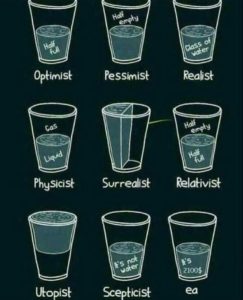
The science behind generating pro-social behaviour is also discovered. Colen, in his research, describes that even though the classic economic theory presumes that an individual will act in self-interest, it has not delineated what the self means. The influence of identity in economics was relatively brought in later than other social science domains such as sociology and psychology. However, Akerlof and Kranton introduced ‘Identity Economics’ to explore how identity influences economic outcomes.

They describe 4 ways through which identity influences economic analysis. They say, “First, identity can explain behaviour that appears detrimental. People behave in ways that would be considered maladaptive or even self-destructive by those with other identities. The reason for this behaviour may be to bolster a sense of self or to salve a diminished self-image… Second, identity underlies a new type of externality. One person’s actions can have meaning for and evoke responses in others … Third, identity reveals a new way that preferences can be changed. Notions of identity evolve within a society and some in the society have incentives to manipulate them … Fourth, because identity is fundamental to behaviour, choice of identity may be the most important ‘‘economic’’ decision people make. Individuals may—more or less consciously—choose who they want to be.”
Brewer and Kramer state that the distinction between different social groups is rather elastic or fluid. They explain that in societies, an individual may belong to different groups, organizations and categories. Their research suggests that having an inclusive identity helps remove the social distance between the people sharing a similar identity, and therefore, a person would be less inclined to make sharp distinctions between the benefit of members of the group. Therefore, according to their research, social identities are flexible and that it is possible to increase sensitivity for each other by influencing one’s identity.
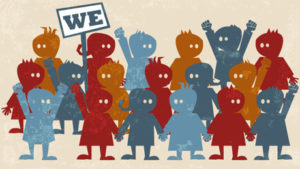
Brewer argued that giving salience to larger expansive inclusive identities would result in more prominence to collective gains in the constituents of the similar identity holders perspectives rather than competing individual benefits. Their research indicates that people consider their fellow group members in more favourable terms, particularly as being more trustworthy, honest and cooperative. This perspective emerges even when the foundation for group identification is minimal and transient. They further say that how a person responds to a social dilemma depends on whether they think of themselves as single and autonomous individuals or instead sharing membership and identity with a larger group or unit.
Conclusion
Thus, the identity one carries is the central feature for the decision one makes. S Radhakrishnan translates a Sanskrit verse in his book, Hindu View of life, saying,
For the family sacrifice the individual; for the community the family; for the country the community, and for the soul the whole world.”
This precedence of identity has been established in the Bharatiya culture since its inception. Integrating all life in one’s own identity allows one to align with the flow of the cosmos, which is designed to progress towards ensuring the overall sustenance of all. Such alignment helps one to accommodate the broader well being into one’s objectives, removing the conflict of interests generated due to intra-group competition. Thus, adopting more prominent comprehensive identities helps one in eliminating rough edges of one’s personality. Therefore, basing our actions on expanded identities results in growth from the inside to the outside, creating a sustainable win-win-win situation for an individual, society, and the environment. However, the subtle elements such as unifying factors of our culture and nationalism often get neglected from being given importance even though they are essential for expanding our identities from the status quo. Therefore, basing our philosophies, processes and institutions on one of the Mahavakya- ‘Aham Brahmasmi’ is critical to ensure peace, joy and harmony in the world.
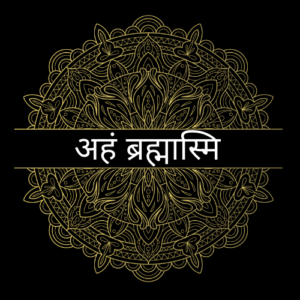
References
https://plato.stanford.edu/entries/game-theory/
https://plato.stanford.edu/entries/prisoner-dilemma/
Coleman, J. S. (1961). Papers on non-market decision-making. New York: Vantage
Akerlof, G. A., & Kranton, R. E. (2010). Identity economics. Princeton University Press.
Brewer, M. B., & Kramer, R. M. (1986). Choice behaviour in social dilemmas: Effects of social identity, group size, and decision framing. Journal of personality and social psychology, 50(3), 543.
Kramer, R. M., & Brewer, M. B. (1984). Effects of group identity on resource use in a simulated commons dilemma. Journal of personality and social psychology, 46(5), 1044.
Brewer, M. B. (1979). In-group bias in the minimal intergroup situation: A cognitive-motivational analysis. Psychological bulletin, 86(2), 307.
Radhakrishnan, S. (1926). Hindu view of life. George Allen And Unwin Ltd, London.
Figure References
https://innovationmanagement.se/wp-content/uploads/2020/11/rock-paper-scissors.png
https://en.wikipedia.org/wiki/Prisoner%27s_dilemma
https://i.redd.it/5mhgbseyf8s21.jpg
https://www.improvewithmetacognition.com/wp-content/uploads/2020/06/self-identity.jpeg
https://www.pbs.org/wnet/need-to-know/files/2011/11/GroupIdentity-post.jpg
https://cdn.shopify.com/s/files/1/0276/0645/0255/products/CopyofahamBrahmasmi.png?v=1619609913

Leave a Reply